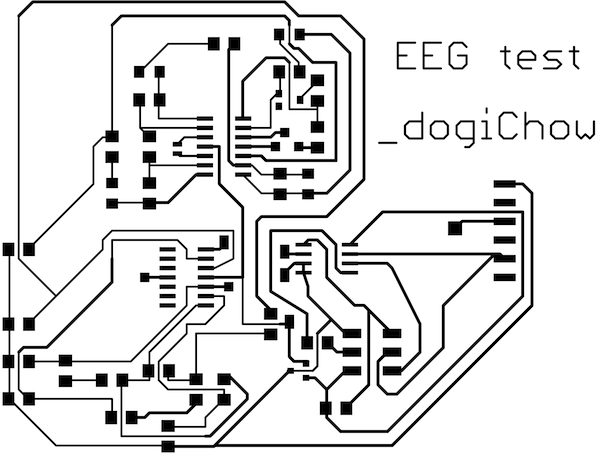
The task was to sense something from the world with an MCU and than display that somehow on our computer. So this week we dive from the Physical to the Digital (Virtual actually, but Digital sounds better). This week my project idea was to use my brain waves as an input device. EEG is the method of reading your brain activity by measuring very small voltage changes on the skin of your skull. The voltages to be measured are very small, on the scale of 10-100 uV and with a base frequency around 30Hz, which is alarmingly close to the surrounding 60 Hz. In order to measure them a LOT of filtering, noise canceling and amplification is needed. As a base of my circuit I used the EEG project that was started at CalArts some years ago. The project can be found here: __ Adam Overton __ .
The original circuit that takes up 90% of my design was made by the gentleman that I mentioned above already (Adam Overton). I extended it with a microcontroller and some additional signal conditioning to get rid of some noise (that did not work out that well after all). Here is my circuit:


In the circuit I have two 9V batteries, the reason for this arrangement is the differential amplifier that needs symmetrical power. Routing was very hard, I couldn't do it without a bunch of wires criss crossing. Here is my final board:

Then I went on and milled my board. It was a fairly complicated board and with a setting of 4 for the speed it took around an hour to mill it (Sorry Matt and Masoud :( ) ... Than I stuffed my board with some nice electronics

